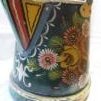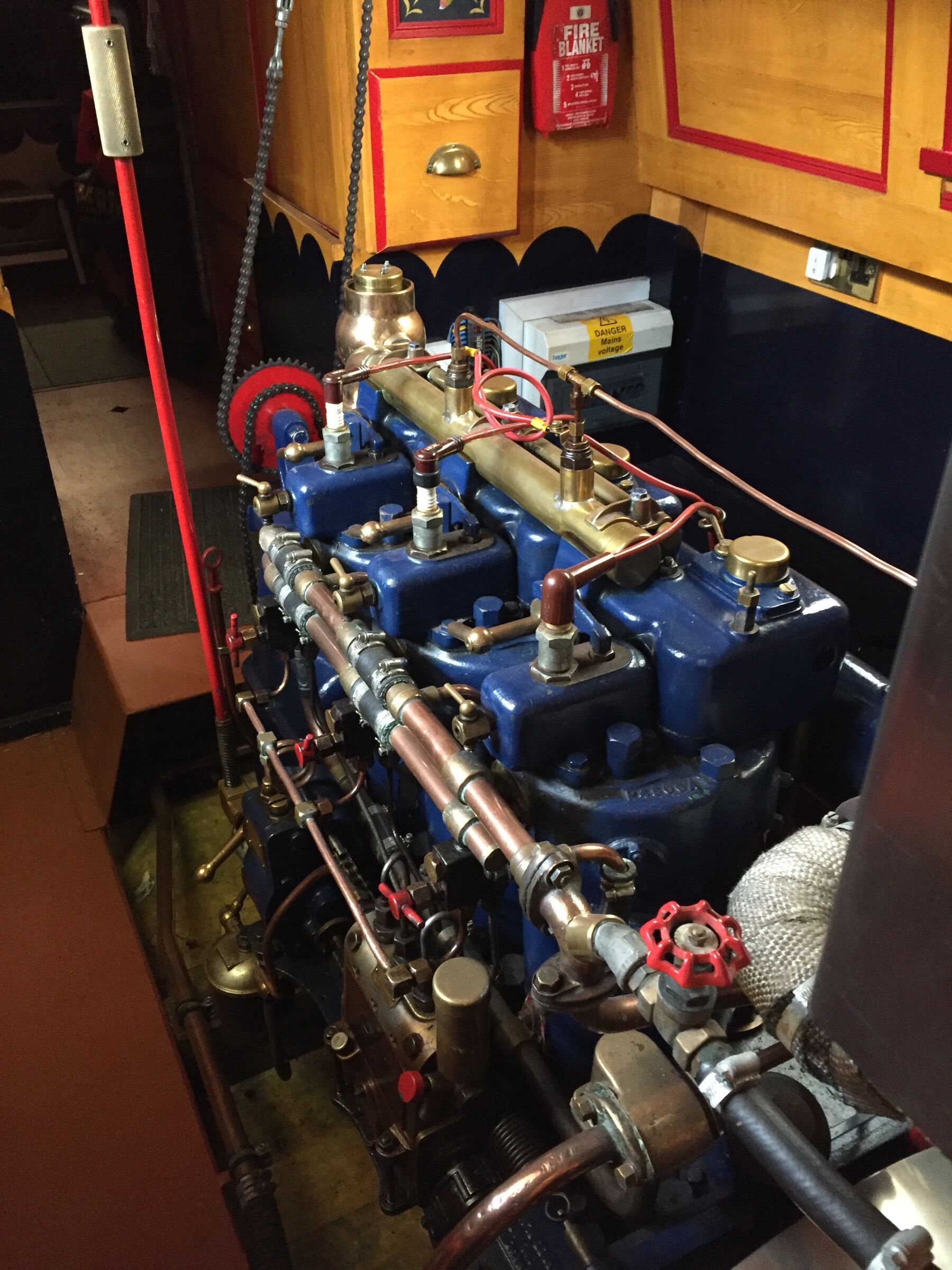-
Posts
2,830 -
Joined
-
Last visited
-
Days Won
6
Content Type
Profiles
Forums
Events
Gallery
Blogs
Store
Everything posted by dave moore
-
This post cannot be displayed because it is in a forum which requires at least 10 posts to view.
-
Thanks again for Keith’s website. Yes, you can contact him through that.
-
Look up Keith Meadowcroft who trades as VoltMaster, he may be able to help. He’s on this forum as Keith M
-
I have original J3 workshop manuals. Somewhere down your way is Phil Robbins , an engineer with an interest in Kelvins. I’ll try and dig out more info for you. Dick Goble was the man but I think he’s more or less finished now.
-
We never fitted the two I had and never had issues with lack of top end lubrication. If it ain’t broke…don’t fix it.
-
I tried to post a photo of Judy’s work taken today but the system turned it down. I’m glad it’s sorted, pleased that my guess was sound. To me, it’s a snip at £35.
-
I totally agree. Bloody awful things...says the trad minded grumpy!!
-
Thanks. I tried to post a photo of her work that I have here but the system wasn’t having it!
-
The stool in David’s photo is the work of the late Ron Hough, the last painter to serve an apprenticeship with Frank Nurser. I doubt that David would part with it and I can’t see £70 being an appropriate price.
-
Thanks Rob. I can’t give a definitive answer but the flowers remind me of the work of Judy Vedmore who was active in the 70s. I have some of her work here at home. The stool is similar, but not identical. Best I can do, I’m afraid.....
-
I subscribed to Waterways World for years. I became disenchanted and called them to cancel a few years back. I was asked for a reason and I replied “ Old fartitis “.
-

Brenmarl Engineering: Spares for Classic Epping Stove
dave moore replied to monkeyhanger's topic in Boat Equipment
I’ve just seen a Facebook post by Ellie Menzies who has a chandlery at Glascote. She has a new stock of spares for Epping and Classics. PM me for contact details -

Brenmarl Engineering: Spares for Classic Epping Stove
dave moore replied to monkeyhanger's topic in Boat Equipment
Pete is away on holiday at the moment. Try Sarah Edgson at Norton Canes Boatbuilders, Glascote Basin Tamworth. -
Thanks David. I thought you would know!
-
Having been involved in canals and associated painting since I was a teen, I’ve acquired the ability to identify the work of some past painters and Frank Nurser is one of them. As soon as I picked up the stool it screamed Nurser to me, I’ve another example of his work here in similar vein. I too endorse Flowers Afloat for anyone interested in the subject. We painters all have characteristic ways of doing things, an unconscious signature to the work. I’ve met many customers subsequently who have told me ” I was in Coventry/ London/ Audlem/ anywhere….when another boater told them….Dave Moore did that for you” Occasionally, I’m asked to sign a bit of work. I always decline saying that the work itself is the signature The timber issue. Frank Nurser died in 1953, I think, so it’s likely that the stool dates from the 40s or so. I’m not sure when plywood became commonly used but I’ve seen little evidence of its use in historic craft with original structures. Others will have more precise knowledge. I don’t recall seeing a cabin stool from working days made from ply. I used to use it to make stools, but it was a pain to fill the endgrain voids, unless I used expensive birch ply. My last few have all been pine.
-
Well spotted Alan! Ive just had a good look at the top and, yes, there is a rectangular panel beneath the swag of flowers. It may well have carried a landscape previously. Magnet man, the stool is softwood, certainly not ply. I wouldn’t expect ply to be used in the period it was made.
-
Epping ranges are a modern version, manufactured by Brenmarl Engineering. Owner Pete Dufficy is a friend. I would guess that the bottle stove would be expensive to reproduce and not very popular. I recall towing the Josher butty Vienna from Northwich some years back, that carried a bottle stove in the cabin, not a patch on a range.
-
I was extremely fortunate recently to come across a cabin stool in a local vintage store, especially as it was painted by Frank Nurser of Braunston. It’s a most welcome addition to my collection of historic ware. As many will know, Nurser enjoyed a fine reputation and his work is very collectible.
-
I suspect that Tom is referring to a bottle stove, a belly shaped casting with an open front. They preceded the closed door range. I recall them sometimes being used in the small cabins of BCN boats. Hope this helps, I don’t have a photo handy.
-

Trying to learn some 'roses and castles'...
dave moore replied to ronnietucker's topic in Arts and Crafts
A bit of background here. Many years ago, when common sense was still a commodity, Phil, myself and others used a product called Keep’s Intenso for decorative work. It dried quickly, covered easily and contained a high quantity of lead. Wonderful stuff, if a little pungent. The colours were rich and vibrant, ideal for this sort of work. I used it for writing on glass, too. In those days, lots of coach painters used Masons enamels. I could ring the local depot and my order would be there next day by van. Phil used their paint too, but something changed along the line, the quality variable and stipulations for minimum orders crept in. Phil decided to produce his own brand of glosses, primers and undercoats as an alternative. He worked with paint chemists at HMG in Manchester to create the range. The market grew and is well respected by many these days. With the brand established, Phil decided to produce an alternative to the now unavailable Intenso. The Keeps factory in Kent had suffered a fire and they ran into difficulties when trying to restart elsewhere, the high lead content being a factor. Thus, Craftmaster Flat Colour was born. Generously, Phil gave me several tins to try out. I was a tad reluctant at first, still having stocks of Intenso, but one Sunday afternoon after a well wined dinner I went to the workshop and tried them out. Not quite Intenso but a very useable alternative which I’ve used for many years now. The work is best varnished when completed, not a problem for me as I generally apply decoration to undercoat on cans, stools etc, much as the old timers did. The exception is if I have to add decoration to a glossed cabin side, in that case I’ll use lettering enamels. If you’ve read this far...well done!! -
Much of our ballast was engineering or “ blue” bricks. Graham Edgson specified these as they are impervious to water. We also used pieces of steel scrap from previous boat builds.
-
They should be fine. I was given 2 to fit on our Kelvin, but being a J3 I never got round to it….I think they are still on a dusty shelf in my workshop. Lovely motors, a measured triple on tick over.
-
As someone who has spent much of his adult life applying traditional decoration, lettering and other similar designs to canal boats I found the video a little disappointing with a few factual errors. I’ve been fortunate to apply my craft to those artefacts normally found on working boats, water cans, handbowls , internal decoration and the like and I’ve never ventured in to the souvenir side of the business at all. There is much speculation on the origins of the art form but I believe that the origins lie with popular decoration found in the Victorian period and before. Roses have always been, and still are, a decorative element on some items. Canal landscapes sometimes have a look of those quickly painted on white faced long case clock dials, alongside the reverse paintings on glass from the period. For further reading, “ Flowers Afloat” and “ Narrowboat Painting” by historian and artist Tony Lewery have much to commend them and are thoroughly researched. Despite this, no hard conclusions are forthcoming, little painting survives from the heyday of carrying days before the Great War. Sadly, as time passes, there seems little interest in preserving these traditions by many modern boaters and not all of the souvenir work for sale commemorates the work of the old time dockyard painters. I won’t go on……..
-
In my experience, the bow fender was hung from above. The weak link is designed to release it should it be caught when ascending or descending locks. Using fixings below to hold the fender in place are a recipe for disaster in the event of a hang up and I think that this has been responsible for fatalities in the past. On Resolute, my old boat, the bow fender was hundred from 2 d shaped shackles mounted on triangular plates just forward of the cants. Shackles secured the chains to the D hooks and rubber hose was pulled over the chains to minimise chafing to paintwork, a weak partly cut through link added as a safety factor. Some hulls have fender anchorages in decidedly unsafe places, in my opinion….fabricators rather than boatbuilders. Dave






